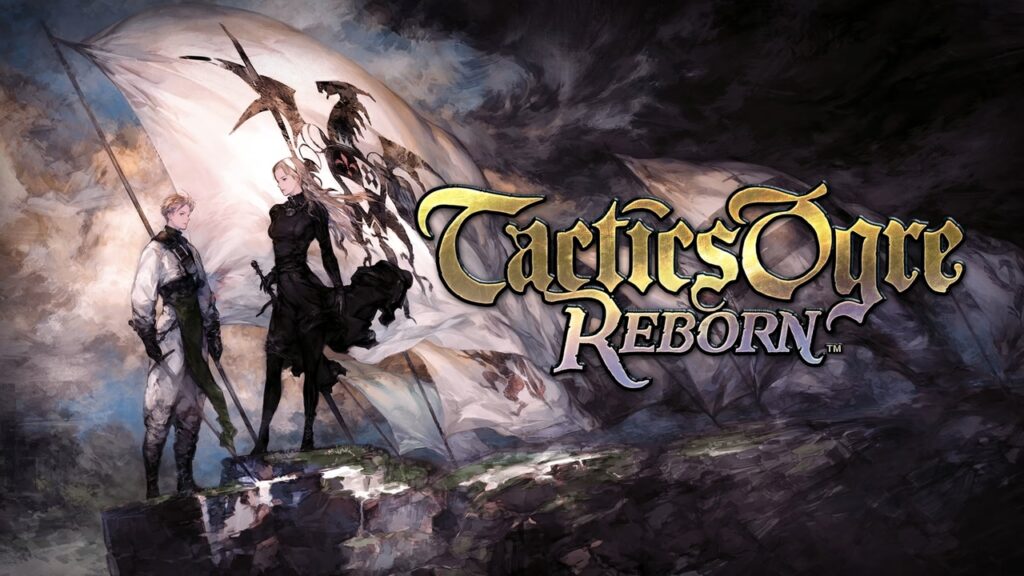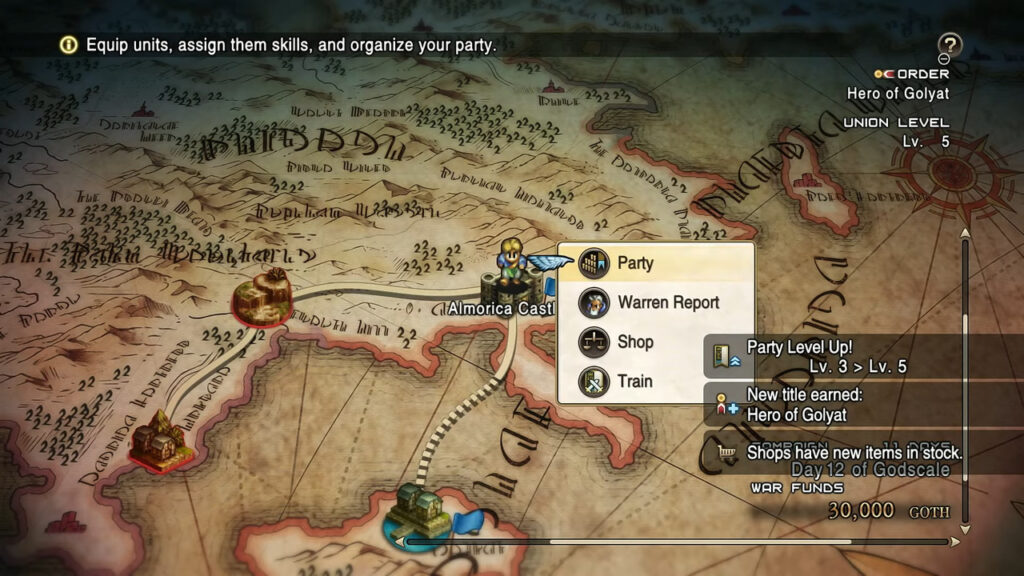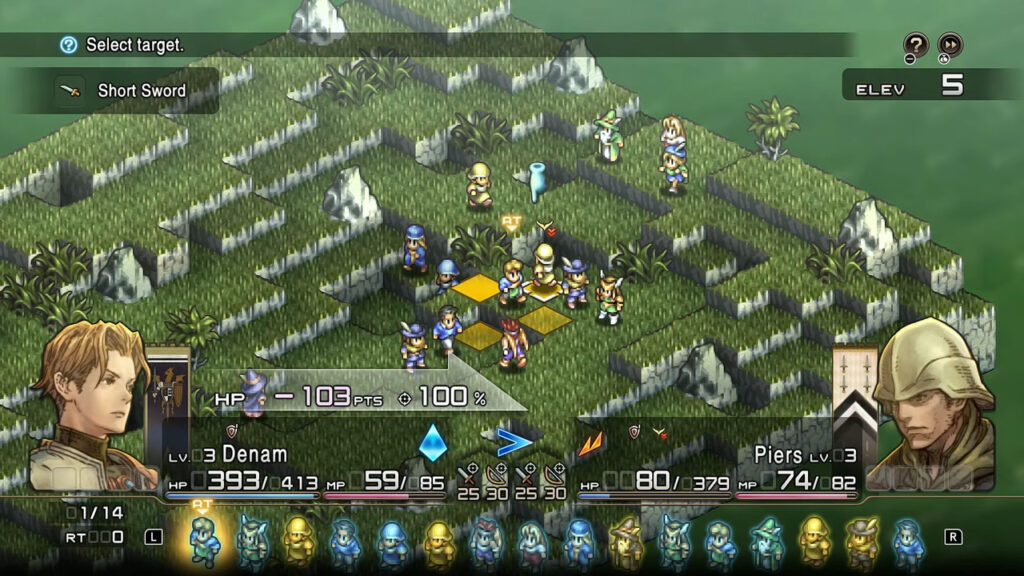
Developer: Square Enix
Publisher: Square Enix
Platform: Switch, PC, PS4, PS5
Tested on: Switch
Tactics Ogre: Reborn – Review
Even if you’re a diehard fan of turn-based strategy RPGs, there is a good chance that you’ve never even heard of 1995’s Tactics Ogre, despite the fact that the game hails from Square Enix’s vault. That’s mainly because the Ogre series is overshadowed by Final Fantasy Tactics, which is probably the first title that people think of when they hear Square Enix and turn-based strategy in the same sentence. Even so, Final Fantasy Tactics and Tactics Ogre share a lot of DNA, and the lesser-known predecessor is finally getting another chance to shine in the form of Tactics Ogre: Reborn, a remake of that original title. We weren’t familiar with the original Tactics Ogre ourselves but given how much effort Square Enix put into promoting the game, we were eager to find out what the fuss was about.
Story
With a branching, decision-driven storyline, Tactics Ogre was ahead of its time back in 1995, and the epic tale that unfolds holds up even to this day. Central to the story are siblings Denam and Catiua, from the Walister clan. The clan forms the core of the resistance against the Galgastani, an oppressive empire. Denam and Catiua get caught up in an attempt to rescue duke Rowley, one of the resistance’s leading figures. Rowley turns out not to be the heroic figure that our siblings thought, and he is willing to make questionable choices to advance his cause. It’s now up to Denam and Catiua to decide how far they are willing to go alongside Rowley’s grey morals to put an end to the Galgastani conflict -although perhaps there are other ways to do so? The story is difficult to fully explain here, not just because of spoilers, but also because choices actually do matter. Tactics Ogre‘s story dramatically diverges based on what you do, to the point that specific recruitable characters are tied to decisions you make during your time with the game. At least, this is the case during your initial playthrough, because once you clear the game for the first time, you can return to specific key points in the story and explore different routes, but you’ll keep any characters you recruited previously.
Graphics
Square Enix definitely missed an opportunity with Tactics Ogre: Reborn’s visuals. Given how they are pushing this remake as a high-profile release, you’d expect the visuals to have received a full overhaul. Unfortunately, it seems like the in-game graphics are just an upscaled version of those seen in the previous re-release of Tactics Ogre, which was released a decade ago on the PSP. Character portraits are fine, but the battle graphics are underwhelming. This is a game that should have gotten the 2D HD treatment, similar to Live A Live or Octopath Traveller. However, Tactics Ogre: Reborn‘s visuals fall in line with lower budget re-releases like Chrono Cross or EGGLIA: Rebirth, even though the game’s price tag would have you expect otherwise. Fortunately, visual performance is fine, although anything less would have been inexcusable.
Sound
One of the biggest additions to Tactics Ogre: Reborn is voice acting, and you can choose between Japanese and English voices. While we definitely enjoyed the English performances, Japanese is clearly the way to go here, with some fantastic renditions that bring character emotions to life. As if the voice acting wasn’t enough, the OST received the orchestral treatment, infusing the soundscape with the necessary grandeur. Tactics Ogre: Reborn may not be a treat for your eyes, but it certainly is for your ears.
Gameplay
With a game that is nearly three decades old, it shouldn’t come as a surprise that Tactics Ogre: Reborn doesn’t do anything we haven’t seen before. That’s not a complaint, because this is a brilliant showcase of the genre, the blueprint for acclaimed titles like Triangle Strategy or the Final Fantasy Tactics games. Gameplay centers around turn-based battles that are fought on a grid. You take control of a carefully assembled warband of characters that you come to know and love through the story, and you’ll pit those against enemy squads in a series of encounters that form the core of the story campaign. All the basics are here: permadeath, elemental attacks can be used to exploit enemy weaknesses, different weapon types open up a wide variety of strategies, and even the direction enemies face when you attack them determines how effective an attack is. That said, the game sticks close to those basics, apart from a handful of features. There are no dating sim shenanigans in the vein of Dark Deity or a massive Lost Eidolons-style overworld to explore. If you’re a turn-based strategy fan that is looking for a title with a back-to-basics approach, what’s present here should delight you as there is no bloat to be found here whatsoever.
The biggest gameplay shakeup compared to the original release comes in the form of Chariot Tarot, an optional feature that was introduced in the PSP version of Tactics Ogre. Using Chariot Tarot, you can undo mistakes and rewind turns in a battle to try a different strategy, similar to the Divine Pulse feature from Fire Emblem: Three Houses. This isn’t the only change to the original of course but other differences are far more subtle. Things like a streamlined UI, an easier-to-manage skill system, and even the option to have your units perform in training battles weren’t even in that aforementioned PSP version of the game. By adding them here, Square Enix has simply made the game more accessible and enjoyable, and we can only applaud this. That said, there are a handful of design decisions here that felt unnecessary. There is a level cap present, for example, which is tied to story progress. This was done so that you couldn’t just grind your units and brute force your way through, but Tactics Ogre can be unfairly challenging at times, and players that have less experience with the genre could run into a roadblock that completely destroys their enjoyment of the game. Likewise, cards that apply buffs and debuffs are scattered around some of the battlefields and these add an unnecessary layer of chaos and randomness to some of the battles. We’d have preferred it had these battles been designed with a bit more focus.
All in all, you’re getting a fairly comprehensive package here, with an impressive amount of replay value, thanks to the branching storyline. There are side stories and optional dungeons present to increase longevity as well. We should note that Tactics Ogre: Reborn doesn’t include random encounters whatsoever. That’s not necessarily a bad thing as they’ve been essentially replaced with that battle training feature, which removes the risk of permadeath while you’re grinding for experience. Apart from the level cap and those cards, a lot of thought has gone into making sure that Tactics Ogre: Reborn feels like a modernized version of the 1995 classic, without removing what made the original so great in the first place.
Conclusion
We were pleasantly surprised with Tactics Ogre: Reborn, even if there were a handful of areas where the game could have been improved even further. For fans of the genre, Tactics Ogre: Reborn is a treat, offering up plenty of strategic options and hours of replay value. The majority of gameplay adjustments make for a streamlined and accessible edition of this venerable classic. We could have done with some more visual polish and the game’s overall difficulty level makes it perhaps a bit too challenging for newcomers to the genre, but these are minor gripes about what would make for a fantastic addition to many a gamer’s libraries.









No Comments